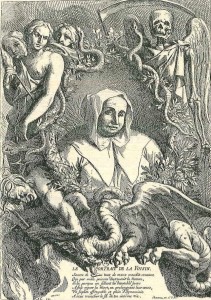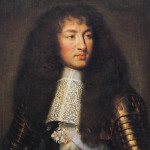
When I think of famous poisoners throughout history, Lucrezia Borgia (1480–1519) and her poison ring come to mind. However, Lucrezia was small potatoes to Catherine Deshayes Monvoisin (1640–1680). Known as La Voisin, Catherine was a fortuneteller, palm (and face) reader, astrologist, seer, herbalist, sorceress, a reader of Tarot, and accused of being a witch. She also practiced midwifery and performed abortions. However, her most lucrative enterprise was being the poisoner to “the stars.”

Catherine provided her services to many of the well-known aristocracy of Paris during a period of King Louis XIV’s reign (1643–1715). In fact, her clients were so well heeled that once Louis became aware of the situation, he had all the evidence sealed or destroyed so no one would ever know the true facts. You see, one of Catherine’s best customers was Louis’s mistress, Madame de Montespan (1640–1707) and he couldn’t afford to have a scandal of this magnitude. Read More The French Lucrezia Borgia

